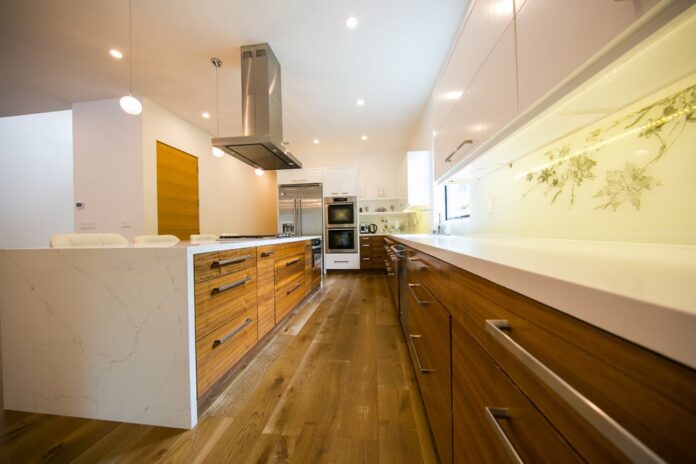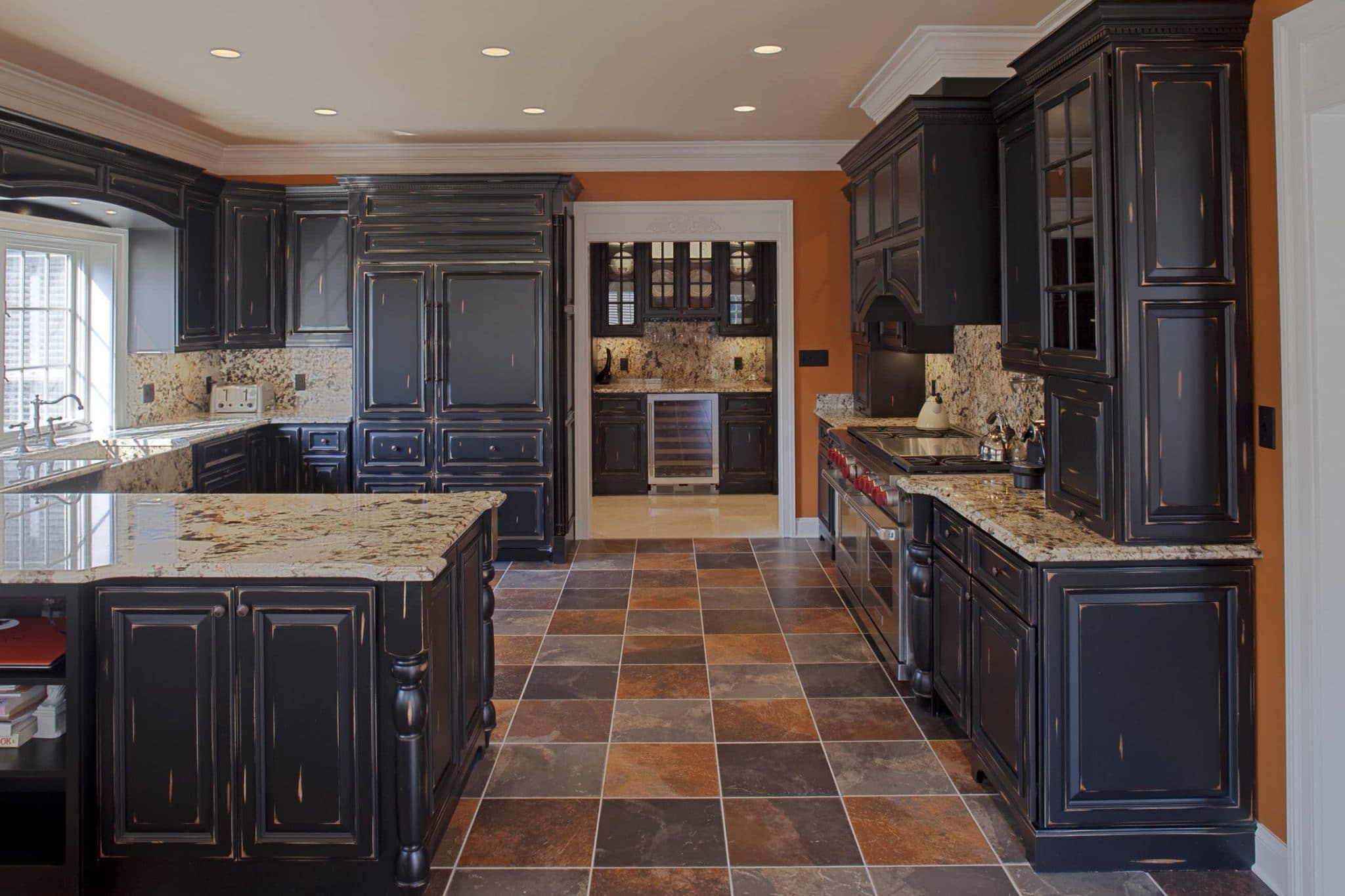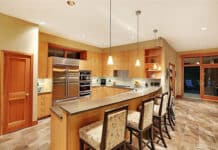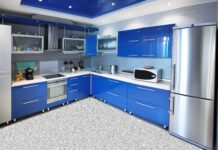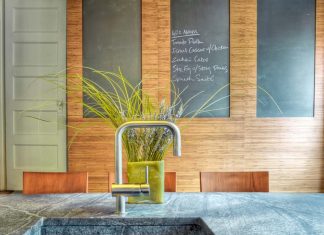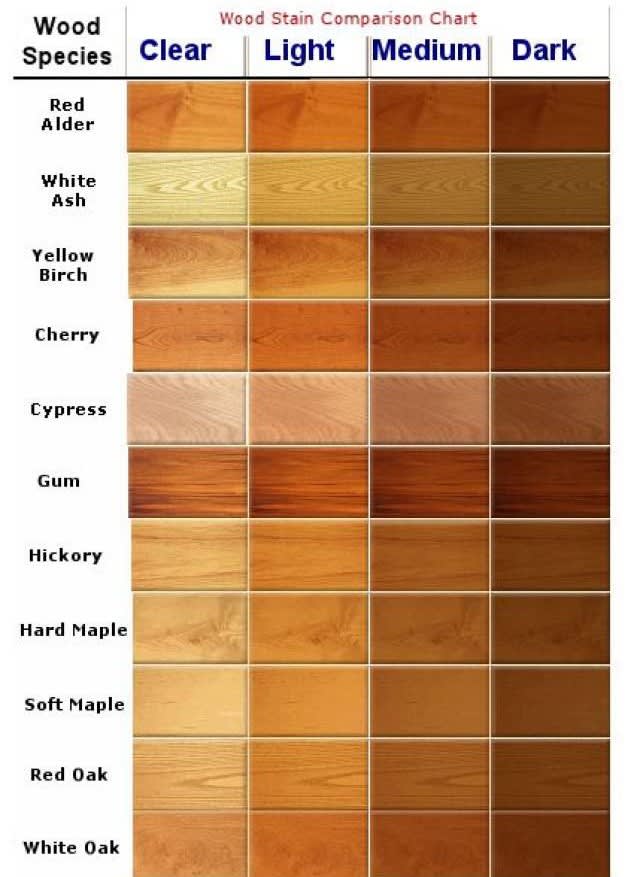
Wood Cabinet Finishes Options
There is a look that will complement whatever concept your creative mind suggests. Let’s examine the different options, how each is made, and the many additional touches that may be implemented.
Stain
Stained finishes provide a traditional look that has been cherished for years. There are a variety of ways to apply a stain to a cabinet. The most popular ones are spraying and hand-wiping techniques. Each is responsible for uniquely different looks.
You’ll find that hand wiping the stain into the wood causes the color to absorb randomly into the wood door. This is an effective and intentional variance.
Unique and appealing, it does receive criticism for the same reasons – the unusual and somewhat irregular look that sets it apart. It is earthy and rustic, a style that looks ‘antiqued’.
A manually sprayed-on stain is rapidly showered over the entire door, creating a consistency lost with the hand wipe technique. It is applied more uniformly, and the results are what you would expect—an even finish.
Of course, you need to be aware that no matter what stain process you use, the results will always vary depending on the wood’s species, grain, and cut.
Because no matter what you are working with, no two pieces of wood will ever be alike.
You need to expect these variations in the grain patterns.
And you need to understand that stains will exaggerate their presence and make other random markings more prominent.
It may also be worth noting that the aging process of different hardwoods is inherent. They typically darken due to exposure to various forms of light over time. Color differences or wood changes can also result from chemical exposure, high temperatures, moisture in the air, and other external influences.
Even smoke from tobacco products has been proven to cause discoloration after prolonged denudation. It becomes particularly visible on cabinets of a lighter finish.
Paint
Of course, one would be amiss without discussing paint in a cabinet discussion. Painted cabinets tend to be the most popular among those on the market. The common drawback is that they are prone to chipping, marks, or even accumulating residue and finger/handprints. They need attention beyond regular maintenance to prevent such incessant blemishing.
You probably know that depending on temperature and humidity extremes, wood expands and contracts. As a result, you may just see hairline cracks appear in the area around the joints.
But don’t fret—it is a very common and natural occurrence. You can prevent this by using MDF (Medium Density Fiberboard) center panels instead of solid wood ones. Better yet, you can find doors like ours that implement rubber strip technology to hold the doors together and prevent these hairline cracks.
Lastly the best option would be to have door faces which are constructed out of a single piece of solid wood and then routed out in the middle. Of course, as with all things, the benefits of these options have drawbacks that should be considered.
So now that you’ve chosen your finish – painted or stained – what further embellishments can be made?
Glazed Finishes
Well, there are popular add-ons (for lack of better words) you can employ – Glazed Finishes.
Glazed finishes have been quite popular; they intensify the visual depth of both stained and painted doors. You may also opt for a “distressed” or “antiqued” look, which gives the cabinets a hearty rustic feel.
If you decide to have your cabinets glazed, much depends on the type of lacquer you choose. The finished look can range from relic chic to passive elegance. It’s a hand-applied technique.
Glazing is successful for antiquing and creating dimension and character. Basically, it highlights the details of contours on doors. The actual coverage of the glaze may also (intentionally) vary based on the style chosen.
Two common types of glaze are most often used for cabinets – standard and brushed.
A standard glaze is applied to the crevassed detail of the cabinet’s door using a small brush or pen (depending on what is most applicable). Essentially, it emphasizes the door’s contours and edges.
A large brush applies brushed glaze over the existing paint (or stain), producing a dimensional effect and providing a nice brushed texture that highlights the door.
You may decide to spring for an additional “distressed” look treatment. This process starts with manually removing the paint from only particular edges on the door, thereby creating a vintage, worn appearance.
The paint is rubbed to the point of barely exposing the wood, making the entire cabinet appear old or antique. It is typically used only with American-style cabinets, not European ones.
There are so many options partly because the market has developed with the realization that not all homeowners want the same thing. Each kitchen reflects the personality of a unique individual.
Now, by combining any number of finishes and add-ons, they can create a kitchen that is unique to them and one that they can feel at home in.
Customize Kitchen Cabinets With Your Favorite Finish
Get a custom feel for your kitchen cabinets with your favorite finish. From stained to painted to glazed, you can get customized kitchen cabinets specially designed according to your style and personal preferences.

